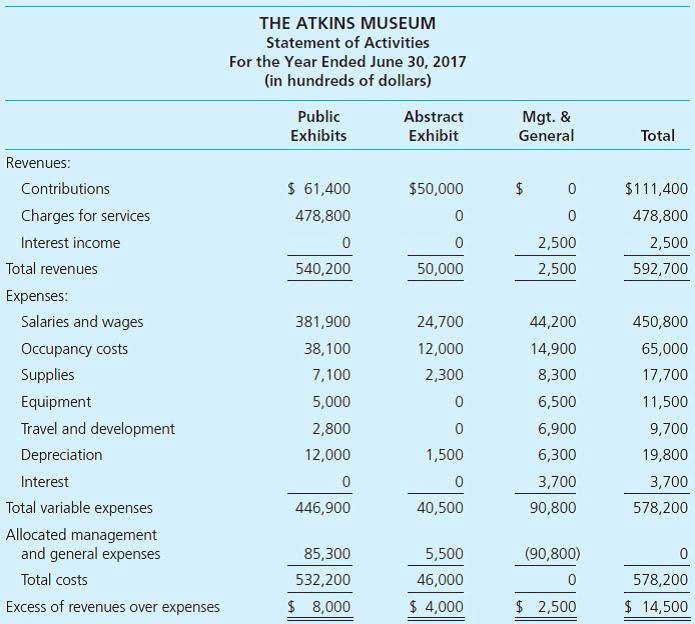Cost of Equity Formula: Learn How to Calculate & Apply It

Retained Earnings represent the cumulative profits a company has earned since its inception that have not been distributed to shareholders as dividends. As such, many investors view companies with negative equity as risky or unsafe. However, many analysts use equity in conjunction with other financial metrics to gauge the soundness of a company. When combined with other tools, an investor can use equity to accurately analyze the health of an organization. Equity matters because it shows how much financial strength something has.
What is the formula for cost of equity?
- Treasury shares or stock (not to be confused with U.S. Treasury bills) represent stock that the company has bought back from existing shareholders.
- The simplest and quickest method of calculating stockholders’ equity is by using the basic accounting equation.
- Equity on a property or home stems from payments made against a mortgage, including a down payment and increases in property value.
- For a company, equity represents the ownership stake of shareholders and is calculated by subtracting total liabilities from total assets.
- Suppose a company is like a giant pie, and each slice represents a unit of ownership called a share (also known as stock).
- That is, it indicates how much money would be available to the company’s shareholders if it goes bankrupt and is forced to pay all of its liabilities.
Net income over the last full fiscal year is found on the income statement—a sum of financial activity over that period. Shareholders’ equity comes from the balance sheet—a running balance of a company’s entire history of changes in assets and liabilities. A good rule of thumb is to look for return on equity that is equal to or just above the average for the company’s sector—those in the same business. For example, assume a company, TechCo, has maintained a steady ROE of 18% over the past few years compared to the average of its peers, which was 15%. An investor could conclude that TechCo’s management is above average at using the company’s assets to create profits. High debt to equity means a company is financed with significant debt and may carry greater financial risk.
How to Interpret Total Equity?
From the viewpoint of shareholders, treasury stock is a discretionary decision made by management to indirectly compensate equity holders. Scenario testing that integrates equity risk parameters further refines these calculations. Adjusting for variables such as market volatility or changes in risk-free rates enhances the precision of financial forecasts, making them more adaptable to real-world conditions. This approach not only strengthens valuation accuracy but also supports strategic decision-making in uncertain environments.
Sustainable Growth Rate
A company’s equity is the difference between its total assets and total liabilities. Mental Health Billing Also referred to as shareholders’ equity, it is used in fundamental analysis to determine the company’s value. Here, equity represents the residual value of the company’s assets after accounting for all its liabilities. Think of it as the « net worth » section of the balance sheet, reflecting what truly belongs to the shareholders. So, while equity reflects ownership, ROE focuses on how well a company is utilizing that ownership (shareholder investment) to create profits. Both are important for investors, but they provide different information.

A P/B ratio above one suggests investors are willing to pay more than the book value due to anticipated growth, while a ratio below one might signal undervaluation or financial distress. Analysts may also use discounted cash flow (DCF) analysis, where common equity influences the discount rate and terminal value, shaping overall valuation outcomes. Common equity and preferred equity are both vital components of a company’s capital structure but serve distinct purposes. Common equity represents ownership with voting rights and potential for capital appreciation, while preferred equity typically offers a stable income stream through fixed dividends. When the balance sheet is not available, the shareholder’s equity can be calculated by summarizing the total amount of all assets and subtracting the total amount of all liabilities.
- They’re popular ways to finance home improvements or other financial needs.
- The house has a current market value of $175,000, and the mortgage owed totals $100,000.
- If the same assumptions are applied for the next year, the end-of-period shareholders equity balance in 2022 comes out to $700,000.
- An outsize ROE can be indicative of a number of issues, such as inconsistent profits or excessive debt.
- On the corporate side, the cost of equity is integral to budgeting and capital allocation.
- Equity financing often demands higher returns because investors take on greater risk.
- Sometimes, a venture capitalist will take a seat on the board of directors for its portfolio companies, ensuring an active role in guiding the company.
By subtracting total liabilities from total assets, you get the equity value, which reflects the portion of the company’s value that belongs to the shareholders. This number is important because it shows how much the shareholders would what is the formula for determining equity theoretically receive if the company were to liquidate its assets and pay off all its debts. Total equity represents the cornerstone of a company’s financial standing, reflecting the owners’ residual interest in its assets after deducting liabilities. At its core, total equity refers to the ownership interest in a company. In simpler terms, it is what remains for the shareholders after all debts and liabilities are accounted for.
How Does Equity in a Business Work?
This implies that shareholders are losing on their investment in the company. For new and growing companies, a https://duballclub.net/all-about-the-reimagined-proadvisor-program-tax/ negative ROE is often to be expected; however, a persistently negative ROE can be a sign of trouble. Though ROE can easily be computed by dividing net income by shareholders’ equity, a technique called DuPont decomposition can break down the ROE calculation into additional steps.

Market Value of Equity

Company or shareholders’ equity often provides analysts and investors with a general idea of the company’s financial health and well-being. If it is positive, the company has enough assets to cover its liabilities. Equity refers to the ownership stake that investors have in a company. Suppose a company is like a giant pie, and each slice represents a unit of ownership called a share (also known as stock). When you invest in a company, you’re essentially buying shares, which grants you a tiny piece of the ownership pie.

Laisser un commentaire
Rejoindre la discussion?N’hésitez pas à contribuer !